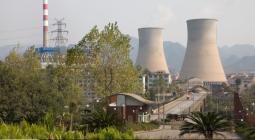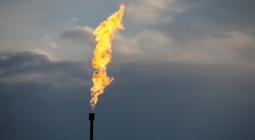From China’s emissions to Australia’s offshore windfarms, things are moving on climate – some even in the right direction

If you’re searching for some hope on the climate crisis before the Cop28 UN meeting in Dubai this month, try this: China may be changing direction on pollution earlier than expected.
Lauri Myllyvirta, a longtime China analyst now with the Centre for Research on Energy and Clean Air, calculated that CO2 emissions from the world’s biggest national polluter are likely to fall next year and could then go into “structural decline”.
While the country’s emissions have increased this year – unsurprisingly, given that Beijing lifted zero-Covid controls at the end of 2022 – the more important news is its record growth in clean energy capacity. The expansion is on a scale large enough to more than meet its increasing demand.
Approval and construction of coal power plants also continues to expand but China has a history of building far more than it needs – its coal fleet runs at less than 50% capacity. Myllyvirta forecasts a permanent change may be under way as clean energy interest groups emerge to rival the traditionally powerful fossil fuel lobby.
His analysis came shortly before China and the US announced they would work together to triple global renewable energy capacity by 2030 and accelerate the replacement of oil, coal and gas. The hope is this may provide some momentum to faltering global negotiations. The US and China are the biggest historic polluters and are together responsible for about 40% of today’s emissions.
There is, of course, a laundry list of caveats on how all this should be interpreted. China refuses to say fossil fuels should be phased out – its top climate official has described the goal as “unrealistic” – and the US is expected to set a record for oil and gas production this year. Which, in case you need reminding, will be the hottest year on record.
There is an unprecedented global swing towards solar and wind power under way, with their share of generation growing at a record annual rate of 14%, but it needs to be faster to live up to the goals of the landmark Paris agreement. While that’s challenging, it’s achievable. But it will not be enough without a simultaneous effort to get rid off fossil fuels. The World Resources Institute estimates coal plants should be retired at a pace seven times more rapid than is happening now. Instead, petrostates plan significant expansions.
Australia is not the biggest driver of the fossil fuel death march but it punches above its weight. It is the fifth biggest producer of coal and the seventh biggest producer of gas. The bulk of what Australia digs up is sold offshore by multinational companies for relatively limited local benefit.
At home, the Albanese government is developing sectoral decarbonisation plans to establish policies to reduce emissions in the six areas in which cuts must be made (energy, transport, industry, agriculture and land, resources, and buildings). This is important work that will go a long way to deciding whether it succeeds, and will be a major focus next year. But problems lie ahead in the short-term.
The government will soon release data that is almost certain to show that emissions increased in Labor’s first year in office. It will have some excuses. The rebound after Covid-19 lockdowns has played a role, and it takes time for new policies to have an impact.
But it’s also true that the government has been cautious, and limited itself to the modest platform it took to the last election. That’s left significant parts of the polluting economy unaddressed – and in some cases encouraged.
Labor will need to commit to substantially more before the next election, including a much stronger 2035 emissions target built on the sectoral plans. It will have to do this while facing a cost-of-living crisis and declining social cohesion, and while misinformation is being weaponised against climate action.
That weaponisation is now focused on the one area in which emissions in Australia have clearly been in structural decline: electricity generation. Polls suggest people like renewable energy but the experience on the ground as the government rolls out policies to backup its target of 82% renewable energy by 2030 is another story. A vocal minority don’t want stuff built near where they live.
This shouldn’t be surprising. Big developments draw objections. But the level of opposition to new transmission lines in parts of regional Australia caught authorities off guard. There has been similar resistance to offshore wind zones in the Hunter and Illawarra regions of New South Wales. It is being fanned by opportunistic arguments from the federal Coalition, which backed offshore wind energy while in government but has now flipped its position.
Offshore wind opponents list a grab-bag of complaints about turbines: they will kill whales; be bad for tourism and fisheries; change tides and surf patterns; affect people’s views. With the exception of aesthetic concerns, which are a matter of opinion, these claims are mostly not backed by evidence. The experience overseas is that offshore wind can, like any development, have local impacts. But they can coexist with marine life and industry if built sensitively in the right places.
It is not clear whether offshore wind will play much of a role in Australia. It is expensive technology, rising costs have hit developments overseas and the country has much cheaper onshore renewable options. But there is a case that it can be a reliable source of new electricity that helps balance other renewables and supports jobs in industrial areas.
That argument has a long way to run. For now, the main takeaway from the fight over offshore wind is that it reinforces, again, just how challenging the energy transformation will be.
Arguments about climate targets won’t mean much without public support for the projects to meet them. Community concerns need to be heard and addressed, and local people need to be empowered.
Given how much clean infrastructure is needed, that’s going to require painstaking legwork – not only from governments but also from companies and campaigners arguing for a smooth transition to a clean future.
Photograph: Dean Lewins/AAP - A rally at Flagstaff Point in Wollongong against a proposed offshore wind turbine farm to be located 10km off the Illawarra coast.






